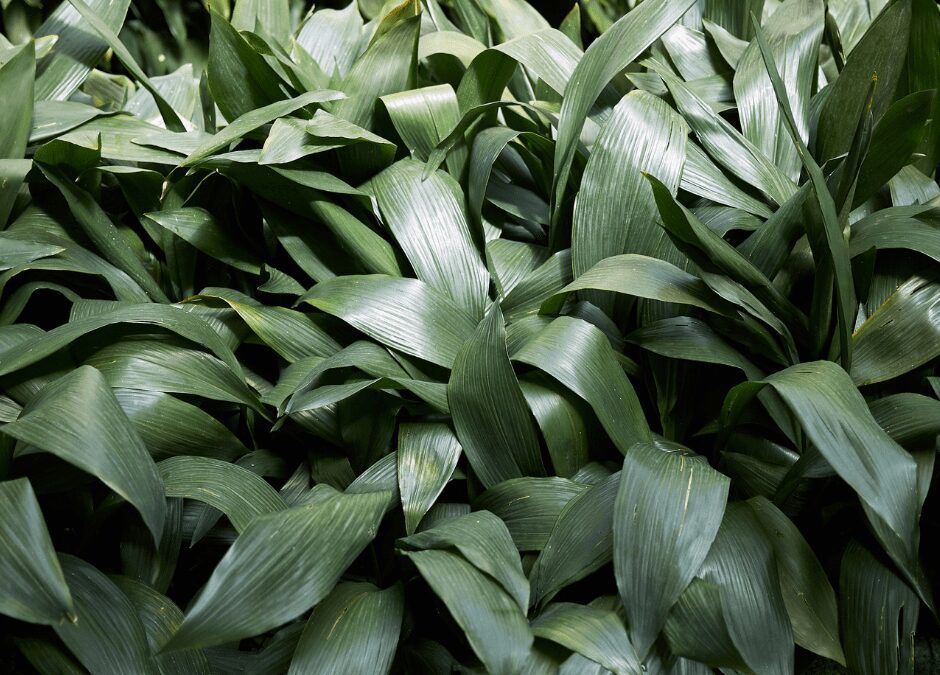Have you got a black hole in your landscape? You know, a spot that has deep, and I mean deep, shade? Like that place where when people say, ‘You can stick it where the sun don’t shine’, they mean that spot in your landscape? Well, I just might have the perfect plant for you. The Cast Iron Plant. This is that plant that could possibly touted as THE shade plant. The Cast Iron Plant is a foliage plant that is a perennial in our area, hardy as all get out, AND yes, you can stick it where the sun don’t shine! Let’s shine a light on this shade-loving specimen today.


Large, glossy, lush, deep-green leaves.
Cast Iron Plants: Descriptions and Climate Tolerance
Cast Iron plants have a commanding presence in the garden with their long, dark green leaves that stand tall and sturdy like soldiers. Their glossy sheen adds a touch of elegance to their rugged appearance. The mature growth of Cast Iron Plants usually tops off around 2-2.5 feet tall and around 2-3 feet wide. They slowly spread in the landscape through underground rhizomes.
Cast Iron Plants (Aspidistra elatior) are the epitome of resilience, and their tough exterior is a testament to their ability to thrive in even the harshest of conditions. They grow very well in San Antonio, Texas, as they thrive in hot and humid climates. But Cast Iron Plants are also very cold tolerant and can survive temperatures as low as 10°F (although extended periods temps this low may burn leaf edges).


Milky Way variety has white-speckles, offering a unique galactic variegation.
Growing Requirements for Shady-Loving Cast Iron Plants
Cast Iron Plants prefer full shade, tolerating filtered light or dappled light, but they really shouldn’t have any direct sunlight unless it’s early in the morning and they MUST be protected from the hot, Texas afternoon sun. If you start to notice yellow or brown leaves (especially at the tips), leaf burn, and/or stunted growth, you might have your Cast Iron Plants in an area that is receiving too much sun. (If in doubt about your light exposure, you can try Cast Iron plants in pots first so you can move them around and find the perfect spot.)
While Cast Iron Plants are highly drought tolerant and can survive long periods without water, they prefer moderate watering and will do best if the soil is kept consistently moist but not overly saturated. Well-draining soil is a must. Cast Iron Plants don’t like ‘wet feet’ (roots in standing water). These low maintenance plants can survive neglect, making them a popular choice for outdoor landscaping.


Morning sun only if at all!
More About Cast Iron Plants
I also find that Cast Iron Plants make a great substitute for Hostas, which are pretty hard to grow here in our San Antonio climate. Both can be munched on by slugs and snails (hostas more), but because Cast Iron Plants are so hardy, they are much more resilient to any damage incurred by the pests. If you start to see irregularly shaped holes in the leaves, slime trails, and damaged or missing leaves, it’s time to treat for snails and slugs.
Cast Iron Plants really earn their reputation for being as tough as ‘cast iron’. And you know what? Plants that tough are perfect for growing in our city. The only things you can count on when it comes to San Antonio weather is that at some point it is going to become blazing hot, and at some point, we’ll get surprised by a freeze. Amiright? If you need some landscape interest to liven those areas where every other plant stretches to get away from, you might want to try the Cast Iron Plant.
~ The Happy Gardener, Lisa Mulroy

